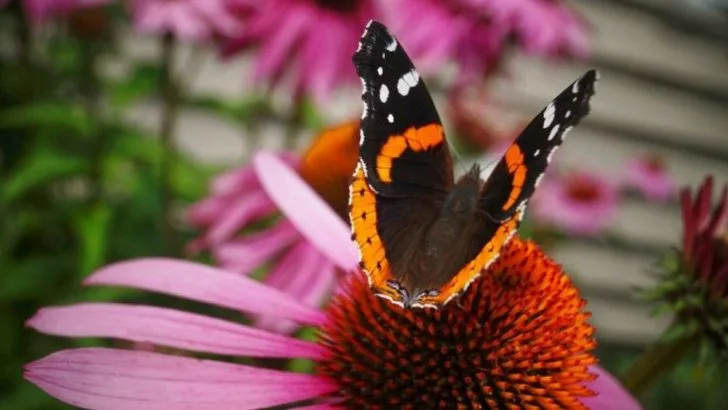Forget the bargain-bin butterfly mixes. You want real results? Start with plants that actually pull their weight—and then some. These 25 aren’t your average pretty faces. They’re nectar powerhouses, wing magnets, bloom machines. The kind of plants that don’t just invite butterflies—they throw a five-star garden party and hand-deliver the RSVP. We’ve picked the best of the best—wild bloomers, backyard legends, and a few sleeper hits that garden centers never tell you about. Your flower beds? About to become butterfly heaven. Ready to stop hoping and start swarming? Let’s dive in.
Milkweed

Milkweed is the quintessential butterfly plant, offering essential nourishment to Monarch caterpillars. Its clusters of pink and orange flowers create a striking display. Did you know? Milkweed’s name comes from its milky sap, which deters predators. With its robust nature, this plant thrives in various climates, making it a garden favorite. Its sweet nectar attracts a multitude of butterfly species, turning any garden into a fluttering paradise. Whether in full bloom or just budding, Milkweed’s presence ensures a lively, colorful space. Its resilience and beauty make it a must-have for enthusiasts.
Butterfly Bush
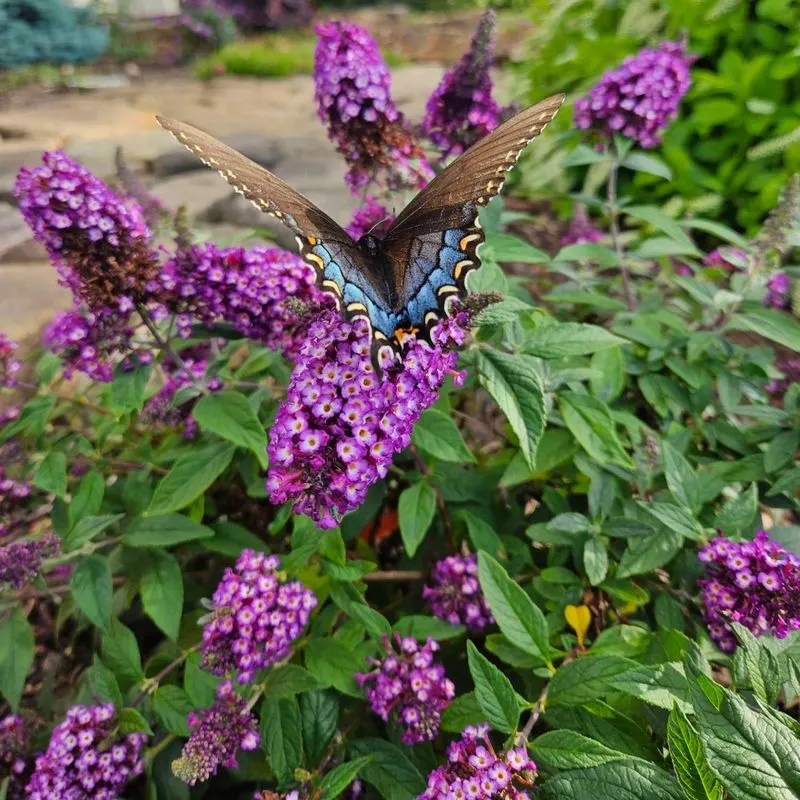
The Butterfly Bush is renowned for its ability to attract a plethora of butterflies with its sweet-scented blooms. Its elongated flower spikes come in various shades, from purple to white. This plant is as hardy as it is beautiful, thriving in sunny spots. A key feature is its ability to bloom from summer to fall, providing a consistent nectar source. Its adaptability to different soil types makes it an easy addition to any garden. The Butterfly Bush not only enhances visual appeal but also supports biodiversity, ensuring a lively garden atmosphere.
Lantana
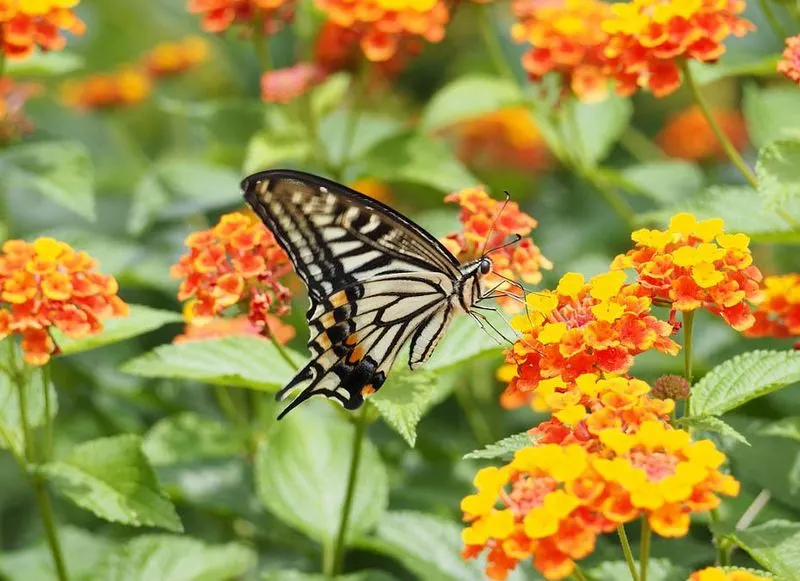
Lantana is a vibrant plant known for its multicolored flowers, ranging from reds to yellows. Its dense clusters are a magnet for butterflies, offering nectar and a splash of color. Interestingly, Lantana can adapt to both arid and humid environments, making it extremely versatile. Its ability to endure tough conditions doesn’t compromise its beauty; it blooms consistently, providing continuous allure. This plant not only beautifies but also supports local pollinators. Lantana’s resilience and bold hues make it a standout in any butterfly garden, offering sustenance and visual delight.
Purple Coneflower
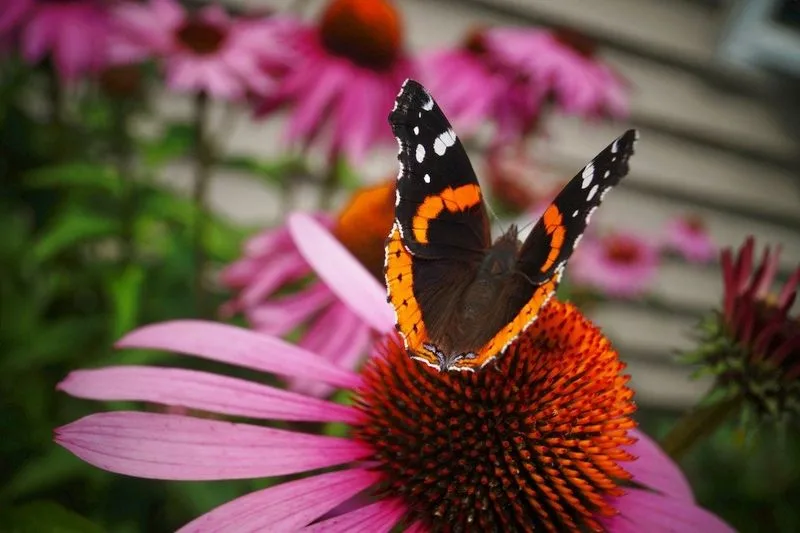
The purple coneflower stands as a beacon for butterflies. With its large, daisy-like flowers, it’s not only visually captivating but also a magnet for pollinators. The central cone is rich in nectar, drawing butterflies throughout the blooming season.
This plant thrives in sunny spots, offering resilience against varying weather conditions. Despite its delicate appearance, the coneflower is surprisingly hardy, adapting well to both garden beds and wildflower settings.
For those seeking a low-maintenance yet rewarding addition to their garden, the purple coneflower is an ideal choice.
Joe Pye Weed
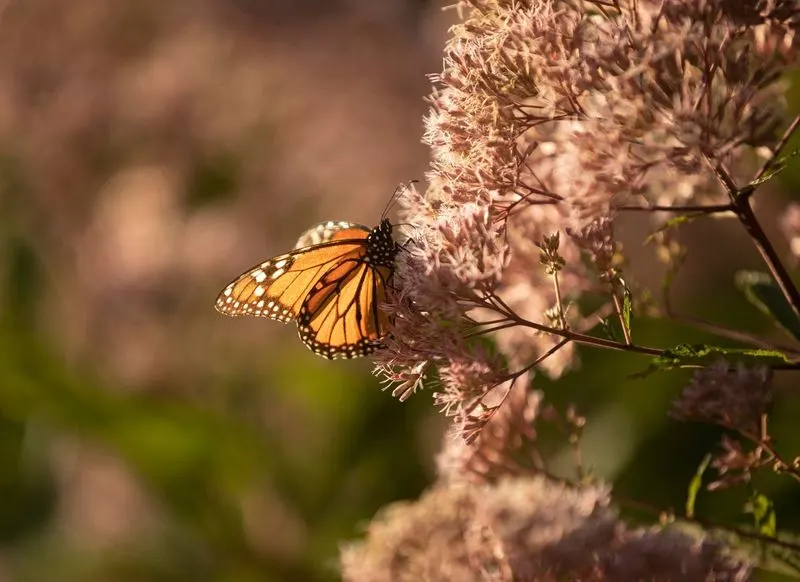
Joe Pye Weed towers elegantly in any garden, boasting clusters of pink flowers that are irresistible to butterflies. Its majestic height and sweet fragrance make it a standout feature.
Typically found in moist areas, Joe Pye thrives with minimal care once established. It’s the perfect choice for gardeners looking to add vertical interest and support pollinator populations.
The plant’s historical use by Native Americans for medicinal purposes adds a layer of intrigue, making it not just a beautiful choice but a culturally rich one as well.
Zinnia
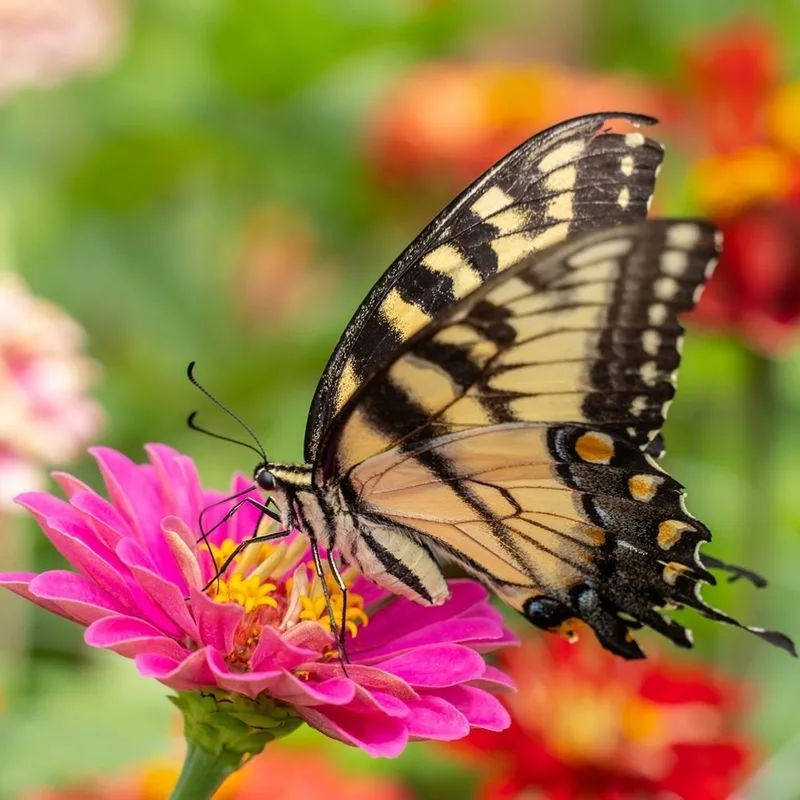
Zinnias bring a burst of color that few plants can match. Their vibrant blooms serve as a landing pad for butterflies, providing easy access to nectar.
These flowers are incredibly easy to grow, thriving in sunny spots and requiring little more than regular watering to flourish. With a wide range of colors, zinnias can fit any garden theme.
A favorite among novice and seasoned gardeners alike, zinnias offer continuous blooms from spring to fall, making them an excellent choice for sustained butterfly attraction.
Bee Balm
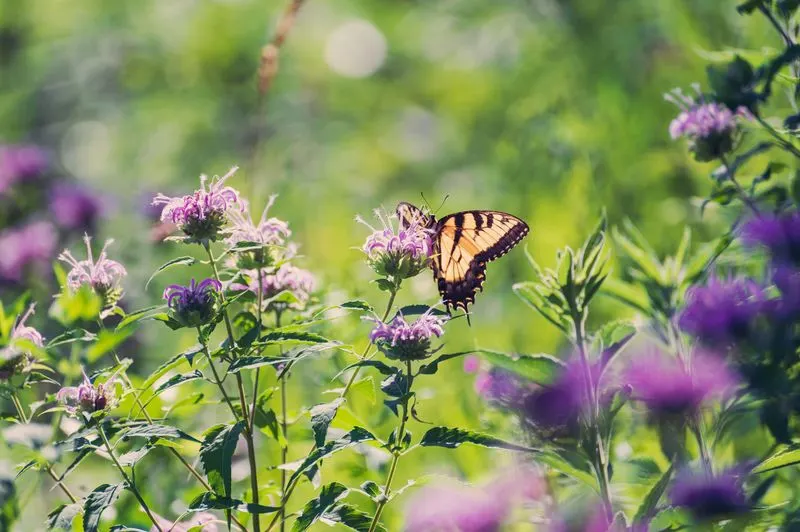
Bee Balm, with its striking red and pink blooms, is a butterfly’s delight. Known for its aromatic leaves and vibrant flowers, it’s a staple in pollinator gardens.
The plant’s tubular flowers make it easy for butterflies to sip nectar, while the foliage adds an extra sensory dimension. Bee Balm can adapt to various soil types, flourishing in full sun to partial shade.
Historically used for tea and medicinal purposes, it offers a touch of nostalgia and practicality. Its robust nature ensures it will thrive in most garden settings.
Salvia
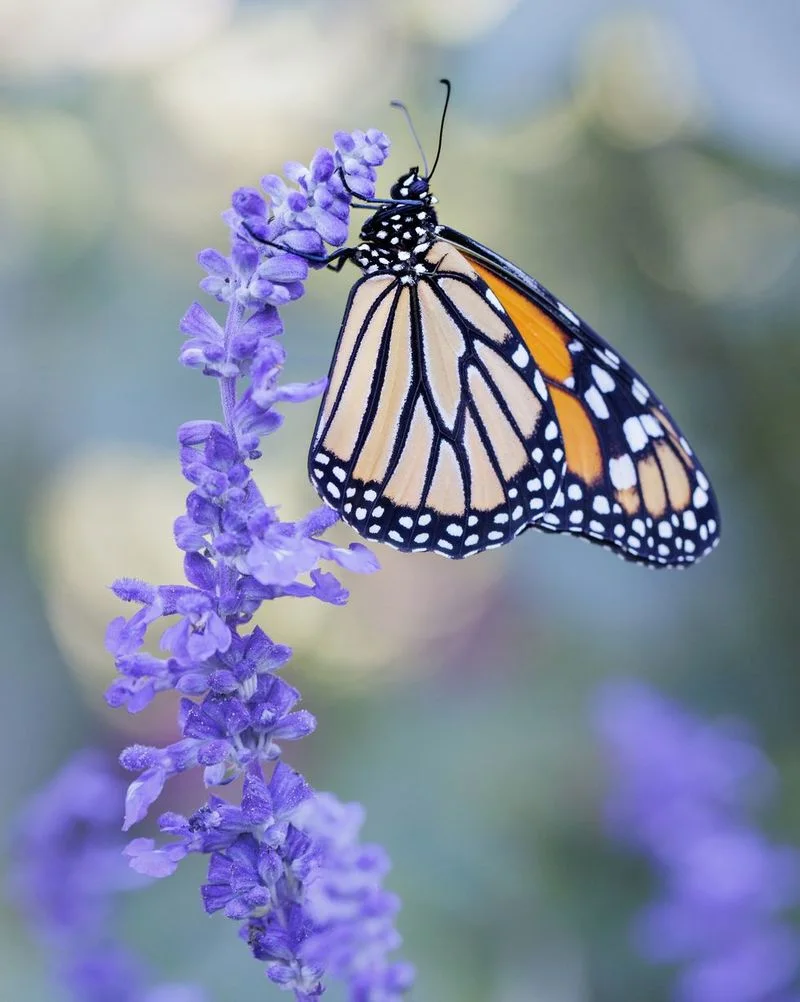
Salvia’s slender spikes of blue and purple blooms are a butterfly magnet. Known for their drought tolerance, these perennials are perfect for low-maintenance gardens.
The flowers emit a subtle fragrance, enhancing the garden’s sensory appeal while serving as a reliable nectar source. Salvia’s ability to thrive in full sun and well-drained soil makes it a versatile addition to any landscape.
Its long blooming season ensures that butterflies have a continuous food source, making it a sustainable choice for pollinator-friendly gardens.
Verbena

Verbena is a garden classic, known for its clusters of small, vibrant purple flowers. This plant is particularly attractive to butterflies, offering a consistent nectar source.
It thrives in sunny locations, making it a perfect choice for borders and containers alike. Verbena’s drought resistance ensures it remains a staple even in challenging weather conditions.
With a long blooming season, it provides continuous color and life to any garden. Its adaptability and ease of care make verbena an excellent choice for both novice and experienced gardeners.
Black-Eyed Susan

The Black-Eyed Susan is a cheerful addition to any garden, with its bright yellow petals and dark centers. Butterflies flock to its simple yet stunning blooms.
A resilient plant, it thrives in a variety of soil conditions, making it a versatile choice for gardeners. Its ability to self-seed ensures it will return year after year, offering consistent beauty.
This plant’s historical significance as a medicinal herb adds depth to its appeal, providing not just visual pleasure but a touch of botanical history to the garden.
Aster

Asters add a late-season burst of color to gardens, with their starry blooms attracting butterflies well into autumn. Their diverse color range complements any planting scheme.
These perennials prefer sunny spots and well-drained soil, ensuring they flourish with minimal fuss. Asters’ ability to attract late-season pollinators makes them invaluable for supporting butterfly populations.
Their rich history as a symbol of love and patience in various cultures adds an element of romance and mystique, making them a charming choice for any gardener.
Yarrow
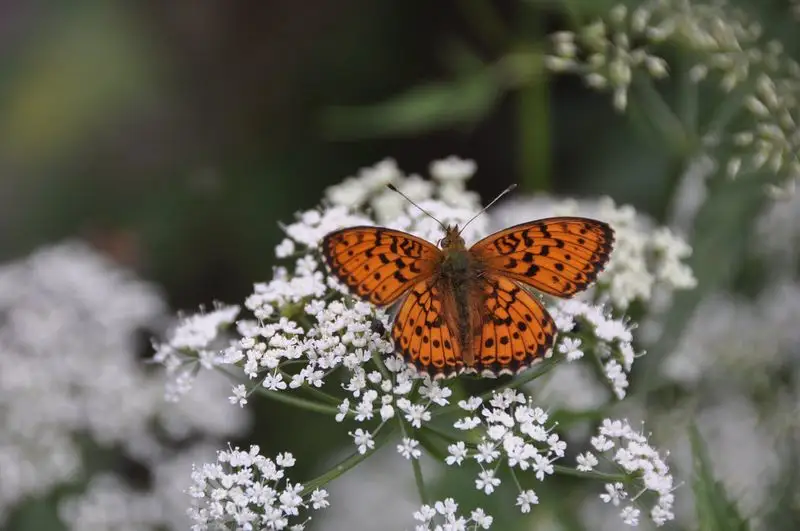
Yarrow is a hardy perennial known for its feathery foliage and clusters of small flowers. Its nectar-rich blooms are a favorite among butterflies.
This plant’s adaptability to poor soil and drought conditions makes it an ideal choice for sustainable gardening. Yarrow’s ability to attract beneficial insects adds ecological value to any landscape.
With a long history of medicinal use, it offers a blend of beauty and practicality, making it a beloved choice for eco-conscious gardeners seeking both form and function.
Phlox
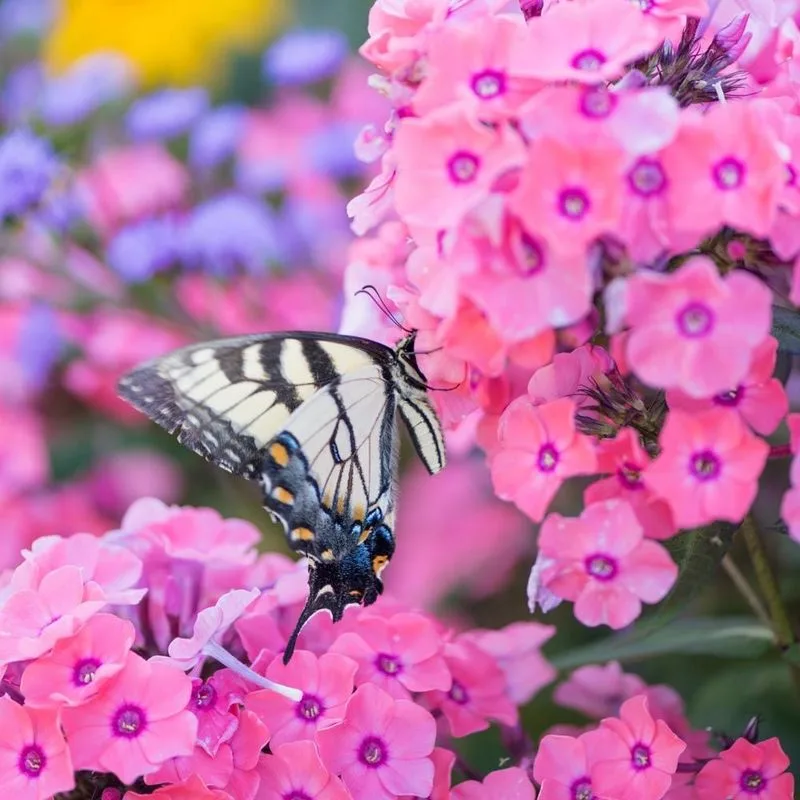
Phlox fills gardens with fragrance and color, its clusters of blooms providing ample nectar for butterflies. The plant’s long flowering season ensures garden vibrancy from spring through fall.
Thriving in well-drained soil, Phlox prefers sunny to partially shaded areas, making it a versatile addition to various garden settings. Its ability to attract not only butterflies but also hummingbirds adds to its charm.
With a storied past in horticulture, Phlox symbolizes harmony and partnership, making it a lovely choice for any garden enthusiast.
Mexican Sunflower
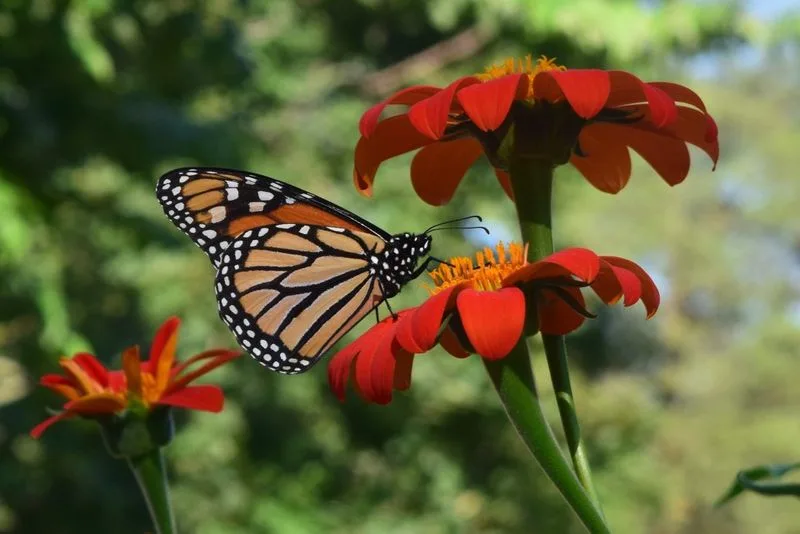
The Mexican Sunflower, with its bold orange blooms, is a beacon for butterflies. This plant stands tall, with flowers reaching up to six feet high. Its vivid color and rich nectar make it irresistible to fluttering visitors. Plant it in full sun, and watch as butterflies dance around its blossoms. Its heat tolerance makes it perfect for warm climates. In addition to attracting butterflies, it adds a striking visual element to any garden. Considered low maintenance, it’s a favorite among gardeners who crave beauty without the fuss.
Ironweed
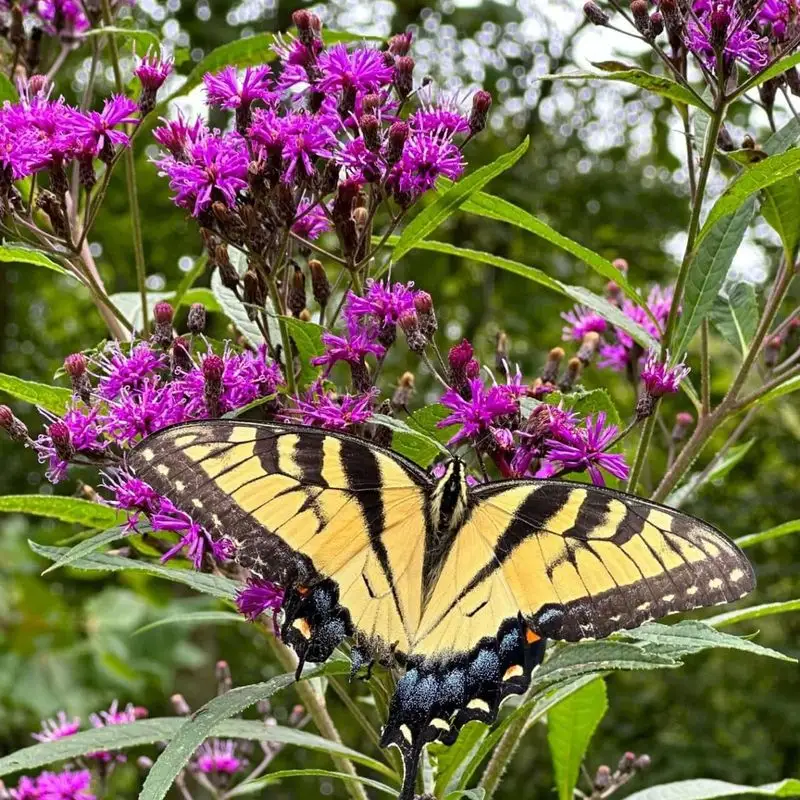
Ironweed’s deep purple flowers are a natural magnet for butterflies. This hardy perennial thrives in a variety of soils and can grow up to seven feet tall. Its towering presence and vibrant blooms create a striking backdrop in any garden. Known for its resilience, ironweed requires minimal care, making it perfect for novice gardeners. Butterflies, especially the Monarch, flock to its nectar-rich flowers. Its late summer blooms ensure a colorful display when many other plants have faded. Ironweed embodies effortless elegance and allure.
Wild Bergamot
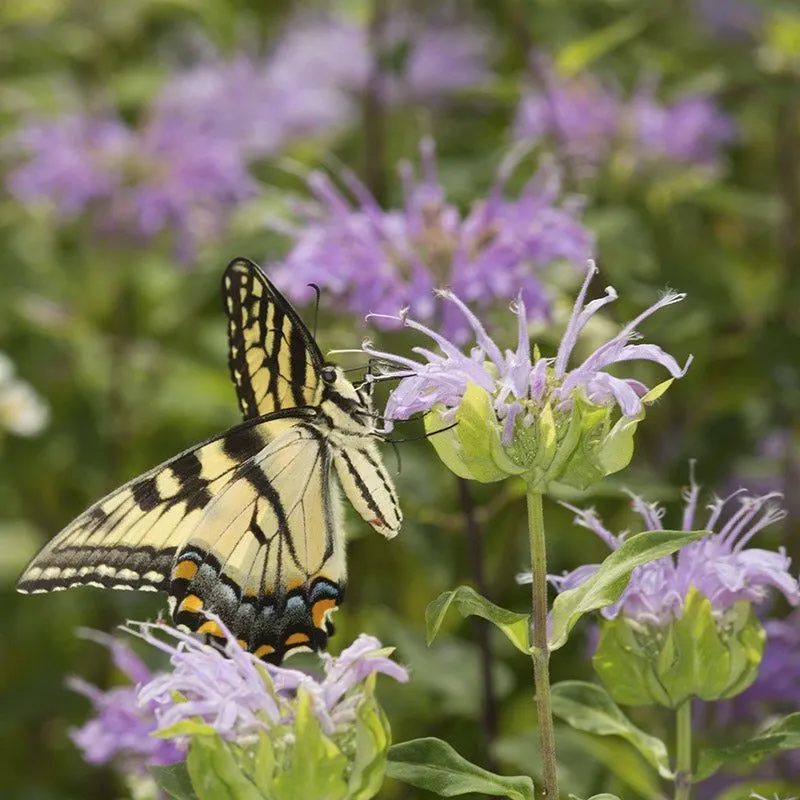
Wild Bergamot, also known as Bee Balm’s cousin, boasts unique lavender flowers that attract butterflies in droves. Its aromatic foliage adds a delightful scent to the garden, enhancing the sensory experience. Growing up to four feet, it thrives in sunny spots. Its blooms appear in mid-summer, providing a feast for butterflies. Wild Bergamot is also resistant to deer and rabbits, ensuring its beauty remains undisturbed. This plant’s playful charm and fragrance make it a garden favorite, inviting both butterflies and gardeners alike.
Blazing Star

Blazing Star stands out with its tall spikes of purple flowers. These spikes are a butterfly’s delight, offering easy access to nectar. This plant prefers full sun and well-drained soil, making it ideal for sunny gardens. Its blooms last well into late summer, providing a long-lasting source of beauty and sustenance for butterflies. Blazing Star’s unique form adds vertical interest to garden designs. It’s a native plant that requires little maintenance, making it an attractive option for busy gardeners seeking both beauty and function.
Swamp Milkweed
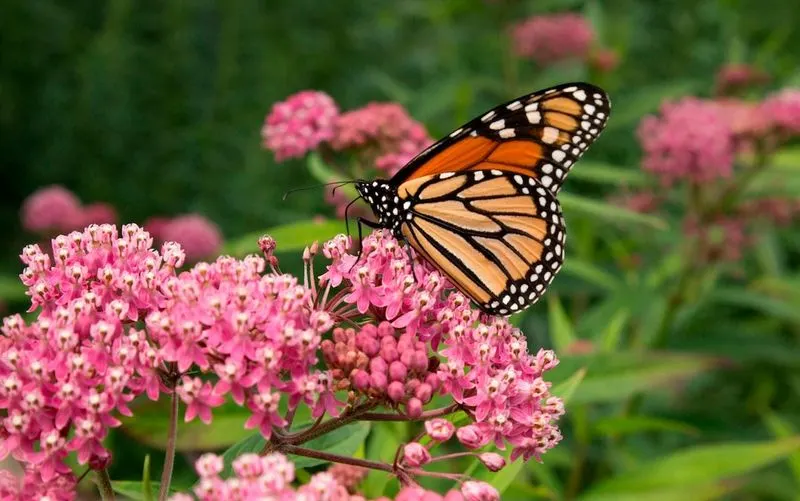
Swamp Milkweed is a butterfly magnet with its clusters of bright pink flowers. Unlike common milkweed, it thrives in moist environments such as near ponds or streams. Its flowers are a vital food source for Monarch butterflies. Standing about four feet tall, it creates a lush, colorful display in the garden. Aside from attracting butterflies, it supports other pollinators as well. Swamp Milkweed’s vibrant blooms and adaptability to wet areas make it a versatile choice for diverse gardening layouts.
Anise Hyssop

Anise Hyssop is beloved for its aromatic leaves and spikes of lavender flowers. Its sweet scent is a welcome addition to any garden, attracting butterflies and pollinators with ease. This perennial thrives in well-drained soil and prefers full sun. Its long blooming season ensures butterflies have a continuous nectar source. Anise Hyssop is also drought-resistant, making it a reliable choice in various climates. Its combination of fragrance, beauty, and toughness makes it a standout plant in butterfly gardens.
Helenium

Helenium, with its sunny yellow and red blooms, offers a lively splash of color to any garden. This hardy perennial draws butterflies with its abundant nectar. Helenium thrives in full sun and tolerates a range of soil types, making it adaptable and easy to grow. Its late summer to fall blooming period ensures that butterflies have a nectar source when other flowers have faded. The vibrant colors of Helenium bring a cheerful energy to the garden, creating a welcoming environment for butterflies and gardeners.
Goldenrod
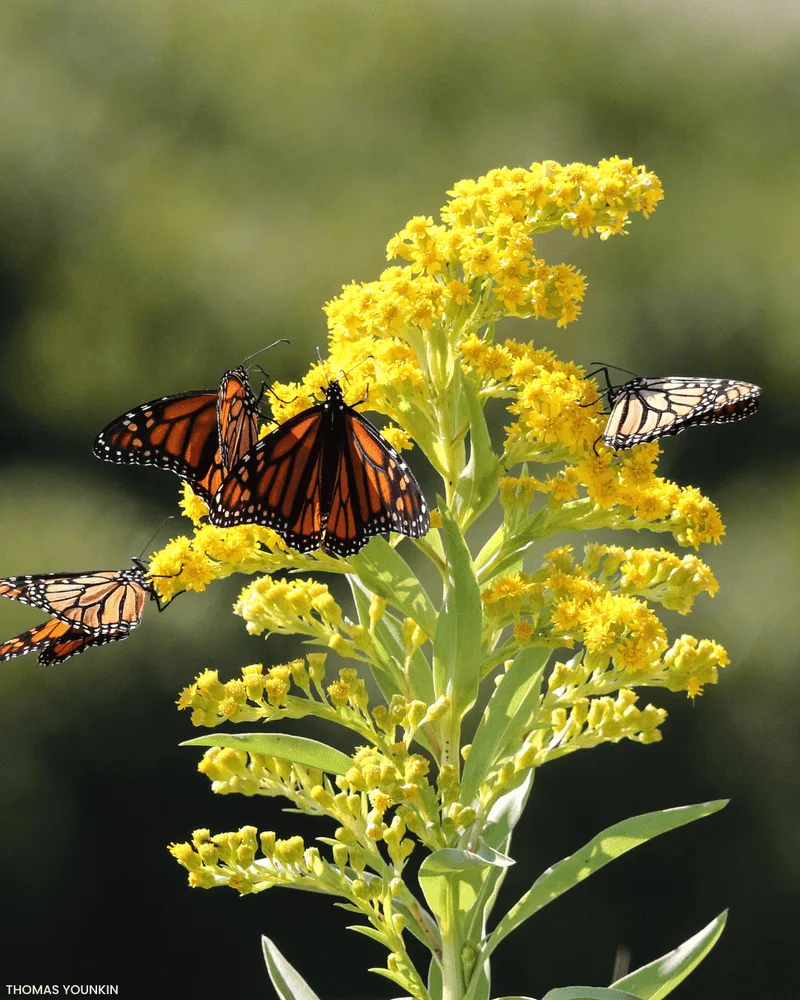
Goldenrod’s bright yellow clusters are a visual treat that attracts butterflies in droves. This perennial thrives in sunny locations and can reach up to five feet in height. Its late summer blooms provide a critical nectar source when many other plants are no longer flowering. Goldenrod is often misunderstood, but it plays a crucial role in supporting pollinators. Its showy blooms add a splash of color to wildflower gardens. For gardeners seeking to make an impact, Goldenrod offers both beauty and ecological benefits.
Gaillardia
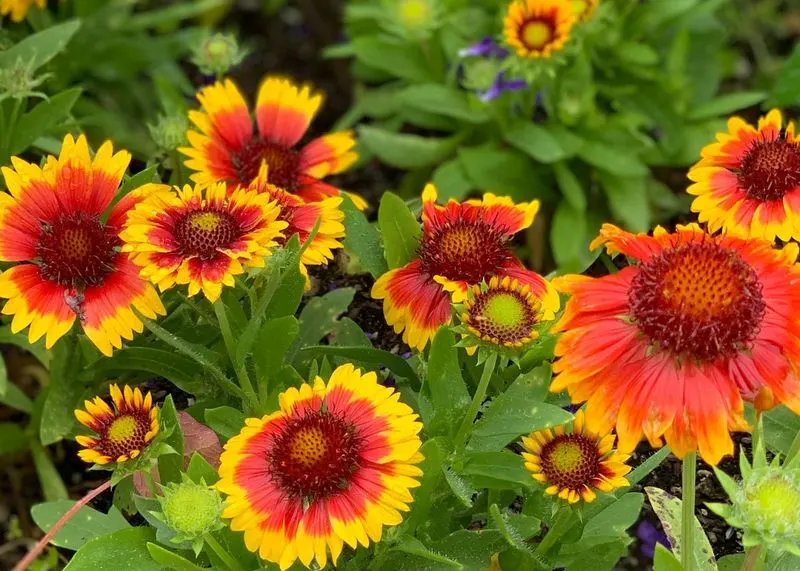
Gaillardia, also known as Blanket Flower, is renowned for its striking red and yellow blooms. These vibrant flowers are a favorite among butterflies, offering a rich nectar source. Gaillardia thrives in sunny conditions and is tolerant of poor soil, making it a versatile addition to any garden. Its long blooming season ensures continuous color and activity in the garden. The cheerful appearance of Gaillardia adds warmth and vibrancy, attracting both butterflies and garden admirers alike.
Mountain Mint
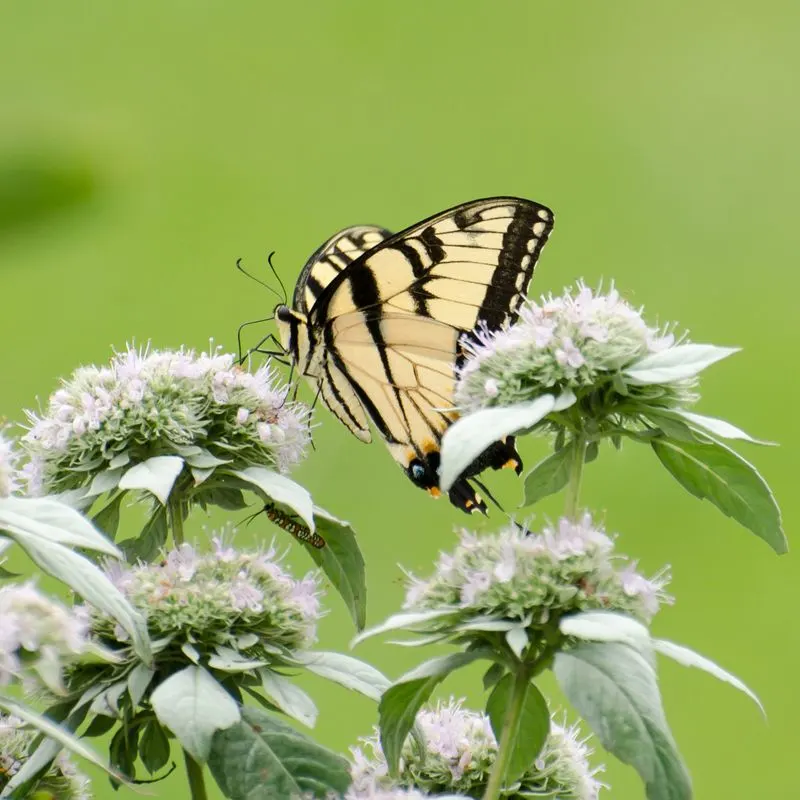
Mountain Mint is a powerhouse of attraction for butterflies and other pollinators. Its clusters of white flowers emit a minty fragrance that fills the garden with freshness. This plant prefers sunny to partly shaded areas and can thrive in various soil types. Its ability to repel certain pests makes it a valuable companion plant. Mountain Mint’s long blooming period ensures a steady supply of nectar. Its unique scent and delicate flowers make it a captivating choice for gardeners looking to enhance both beauty and biodiversity.
Coreopsis
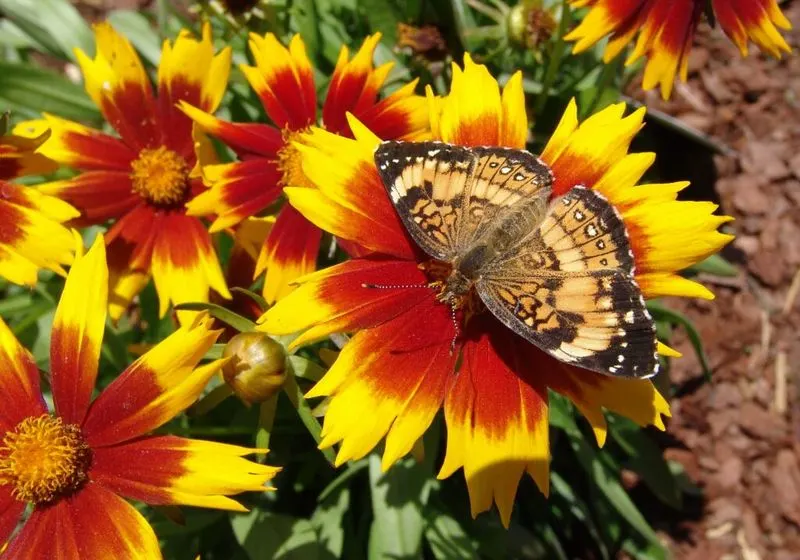
Coreopsis is a cheerful addition to any butterfly garden with its bright yellow flowers. Known for its ability to thrive in various conditions, it prefers full sun and well-drained soil. Coreopsis’s long blooming period ensures butterflies have a continuous nectar source. Its daisy-like flowers add a carefree charm to garden spaces. This plant is drought-tolerant, making it low-maintenance for busy gardeners. Coreopsis’s sunny disposition and resilience make it a reliable choice for attracting butterflies and adding color to any landscape.
Sedum
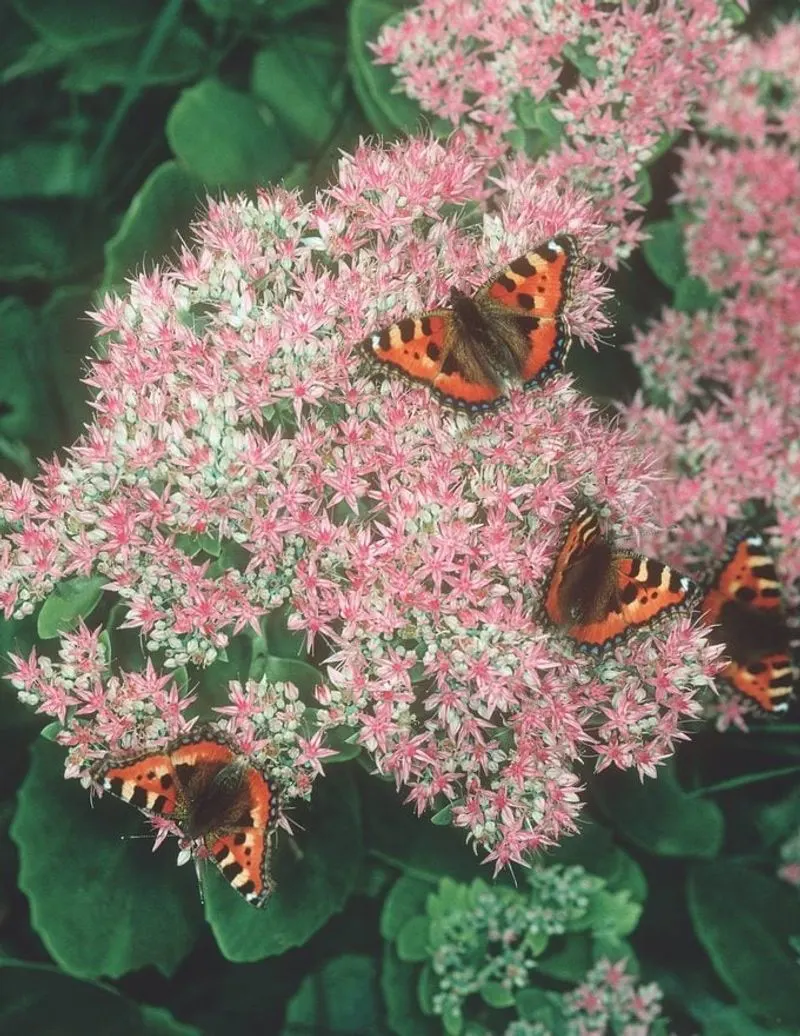
Sedum, with its clusters of pink flowers, is a magnet for butterflies. This succulent thrives in sunny, well-drained areas, making it perfect for rock gardens. Its blooms appear in late summer, providing a vital nectar source for butterflies during this time. Sedum’s fleshy leaves store water, allowing it to withstand dry spells. Its unique appearance and drought resistance make it a distinctive choice for gardeners seeking to add texture and interest to their butterfly garden. Its reliability and beauty are unmatched.

